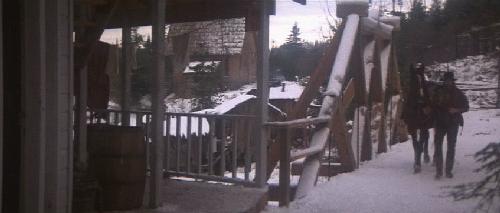Australia (Baz Luhrmann, 2008)
I’m late to the party on Australia, so this is going to be a belated defence of it. While it’s true that it has generally been positively reviewed (at least in its home country), when a film is as hyped as this one is, faint praise damns. Mix in a few very prominent or particularly negative reviews (such as Luke Buckmaster’s over at InFilm Australia, here), the less-than-expected box-office, and the complete dissipation of any Oscar buzz, and I think it’s fair to say that a sense of disappointment has built around Australia. This was part of the reason that I was so late in seeing the film. I had been pumped for it after seeing the trailers, but it had slipped down in my priorities as it became clearer that Luhrmann hadn’t pulled a rabbit out of his hat and produced a masterpiece. When I finally did see it, though, I was pleasantly surprised. Taken on its own terms, Australia is of course no classic, but it is nevertheless highly enjoyable.
What’s fun about it is how ambitious it is: Luhrmann has mixed up elements of the Australian western (The Man From Snow River), effects-laden war film (Pearl Harbour), epic love story / melodrama (Gone With the Wind), leftist social drama (Rabbit Proof Fence), and more old-fashioned attempts to negotiate Australia’s relationship with its indigenous inhabitants (Jedda), and filtered these disparate influences though the heightened style familiar from Luhrmann’s previous work. Try something like that without it being a little bit of a muddle and you’ve made a bona fide classic. As it is, you do feel the gears change, occasionally gratingly, but what’s surprising is how often it does come together. The film is involving, wonderfully shot, and always entertaining.

